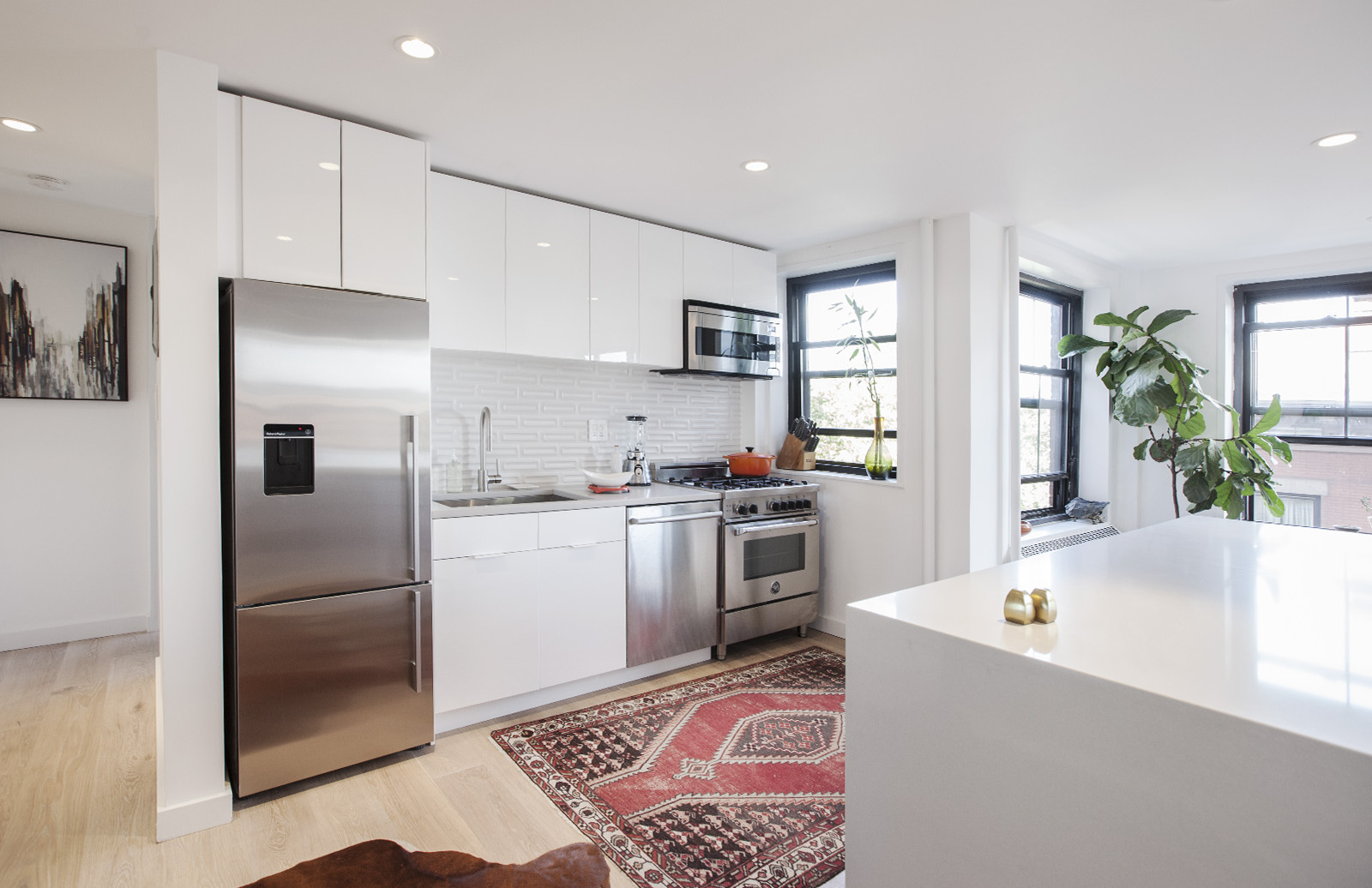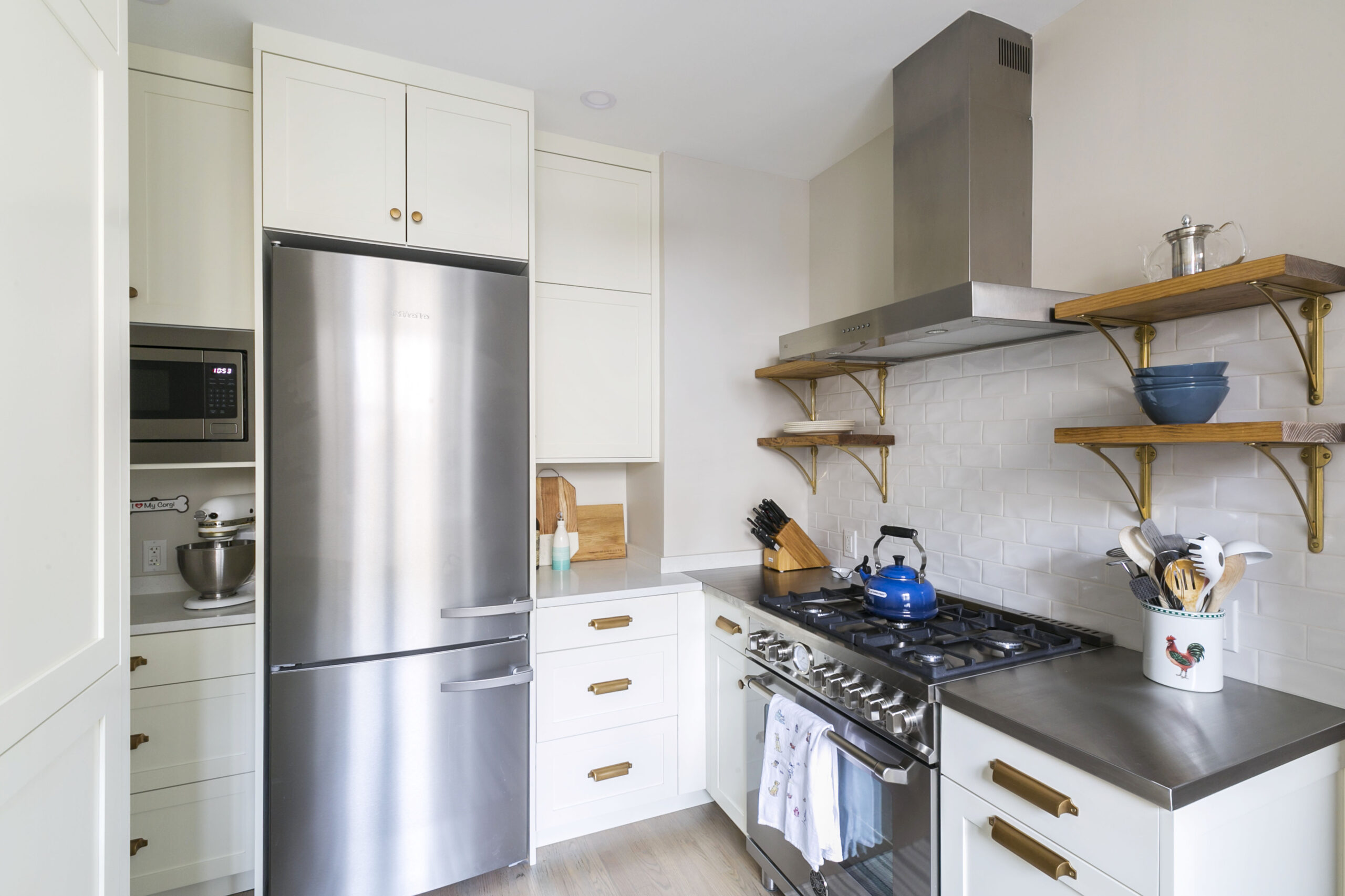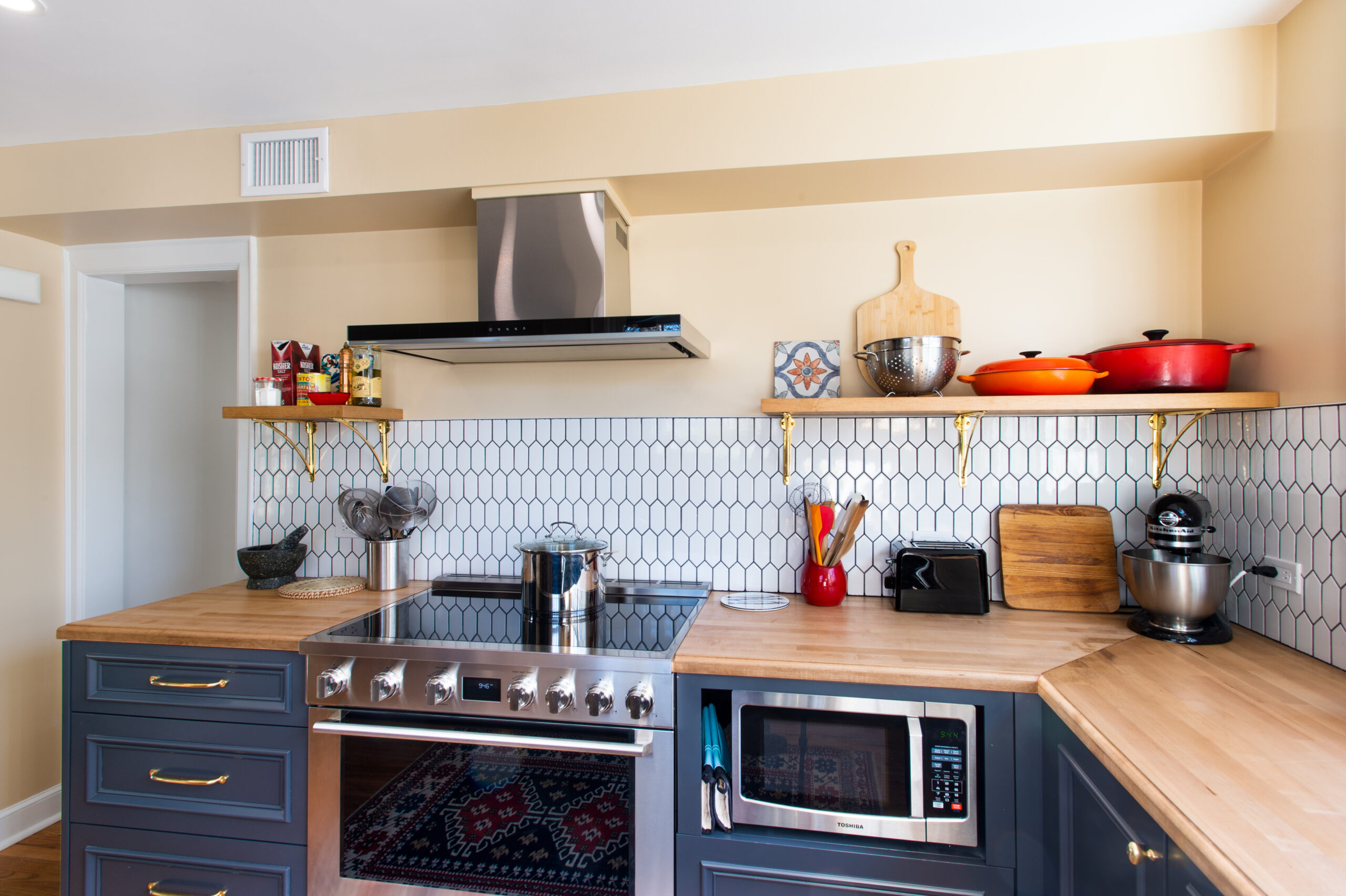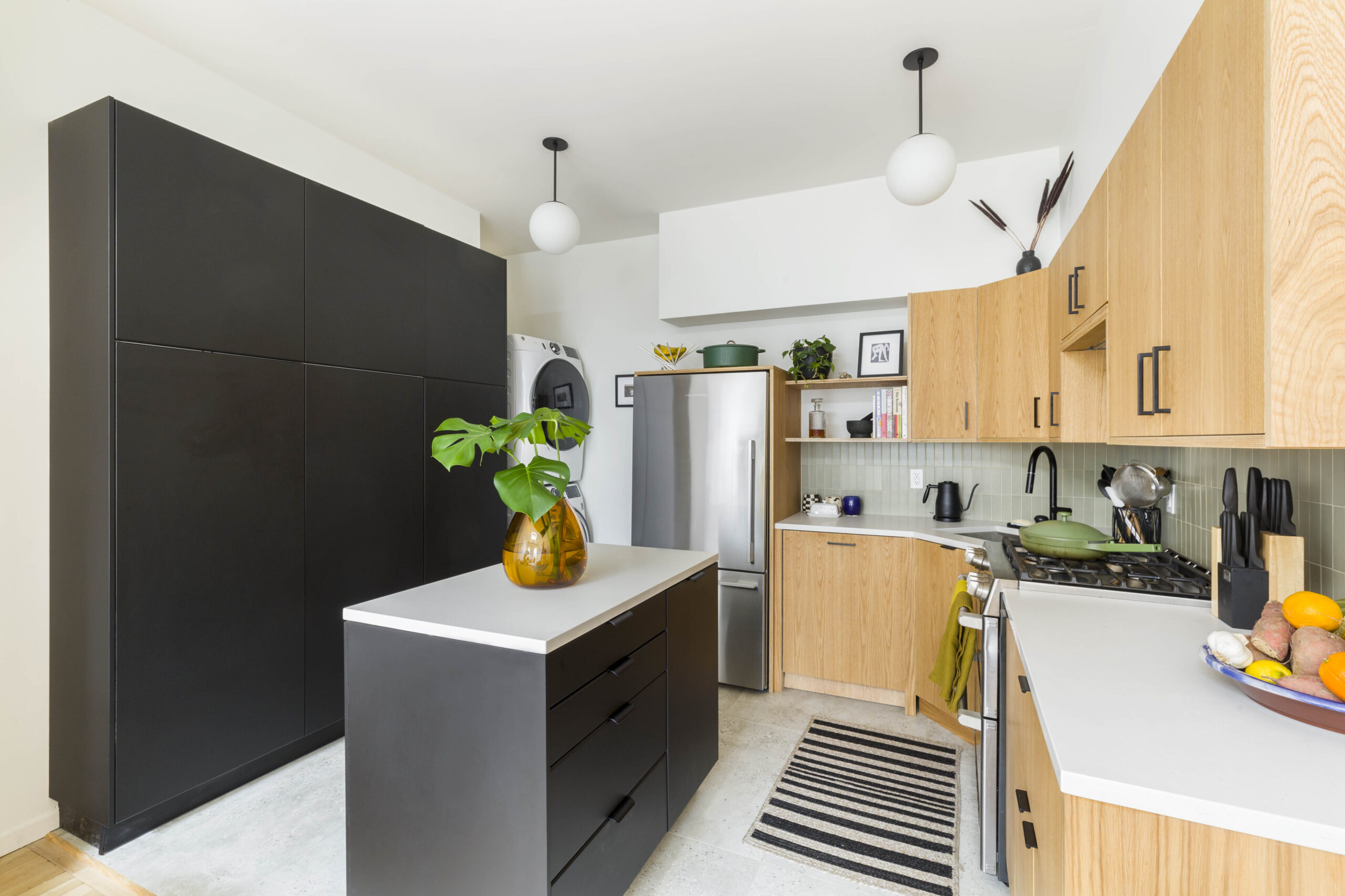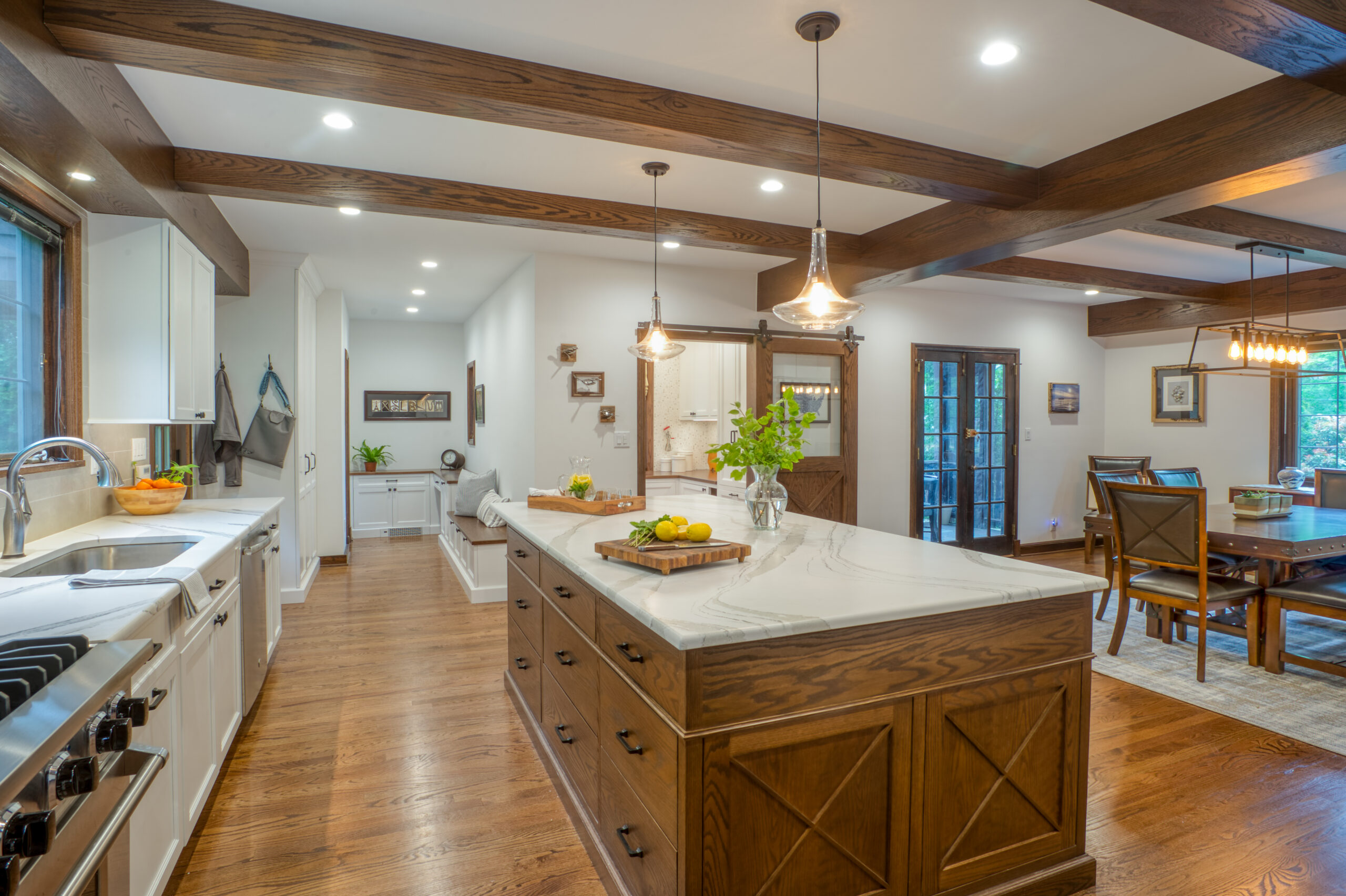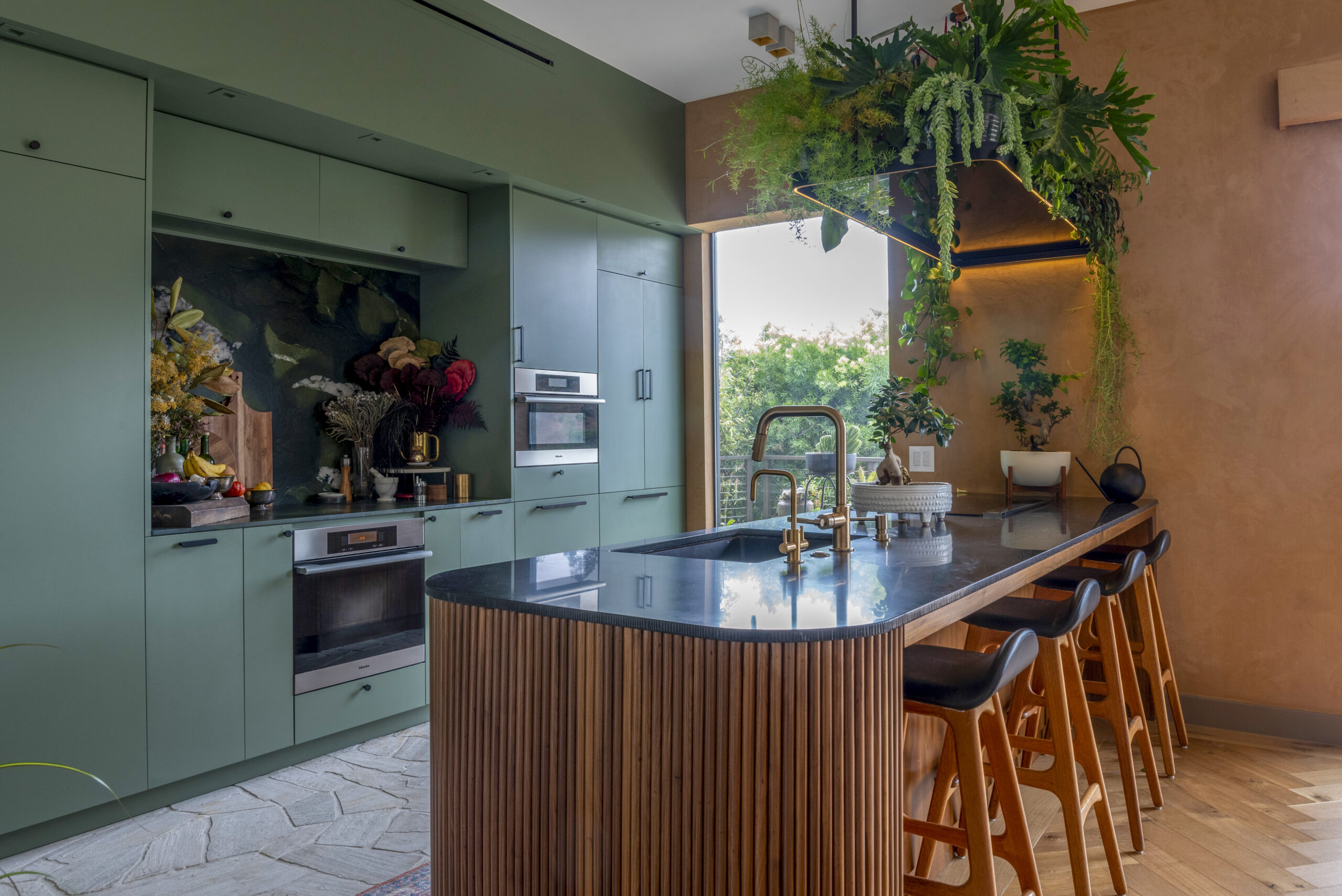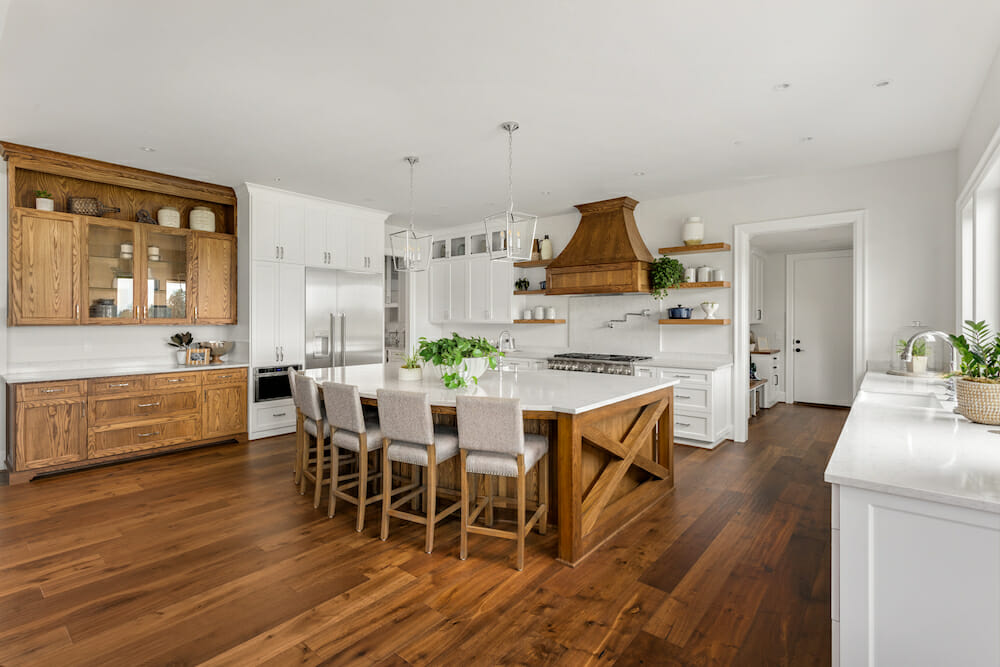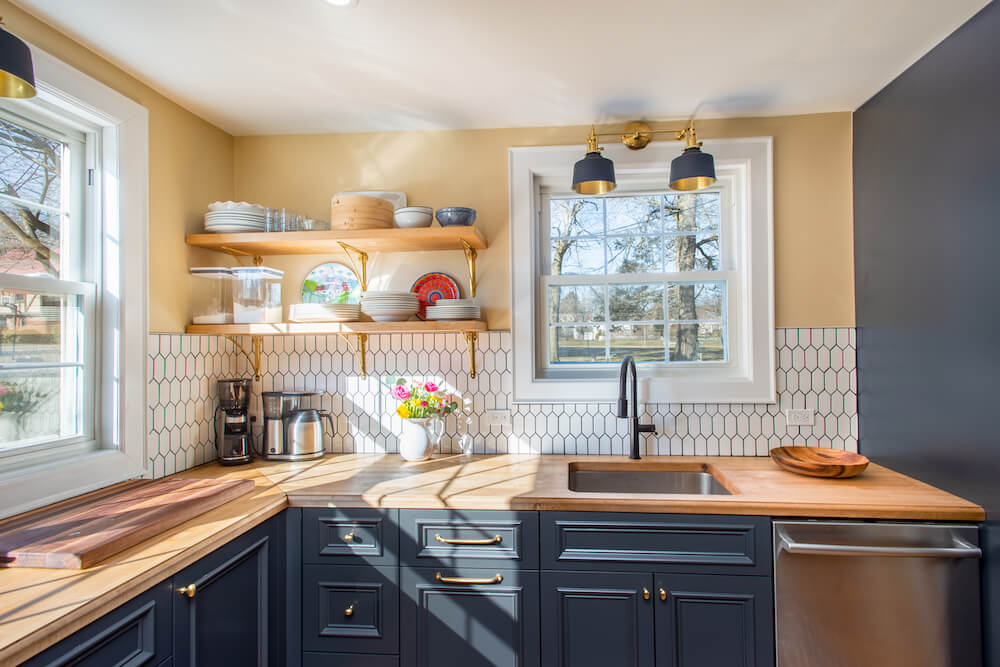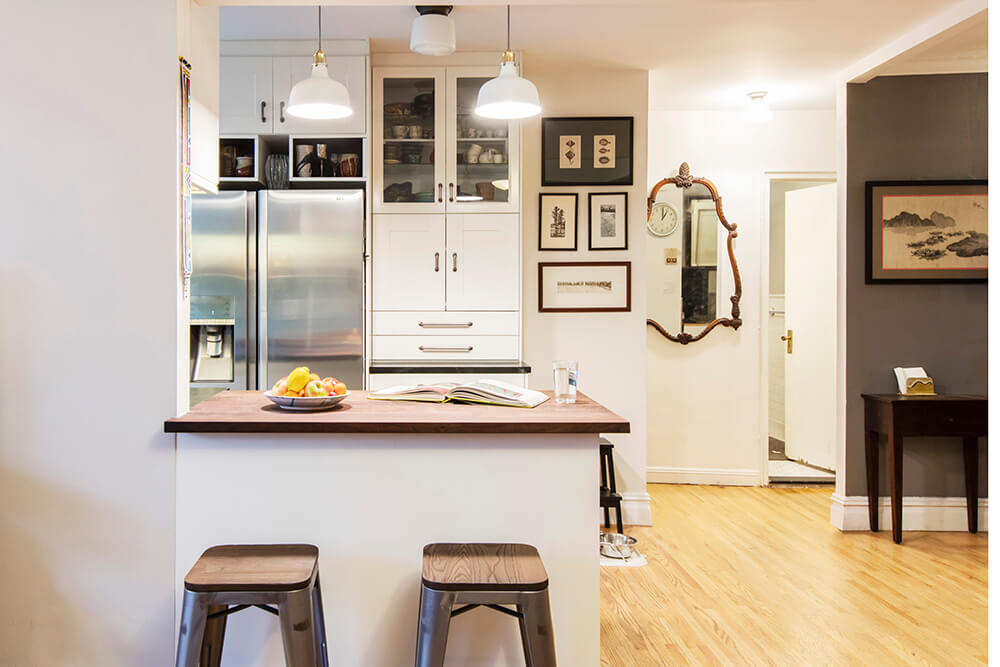Family-Friendly Kitchen Flooring: Guide to Durability, Safety, and Style
Good news: You can have pretty much whatever you want in your kitchen, as long as you follow a few smart guidelines.
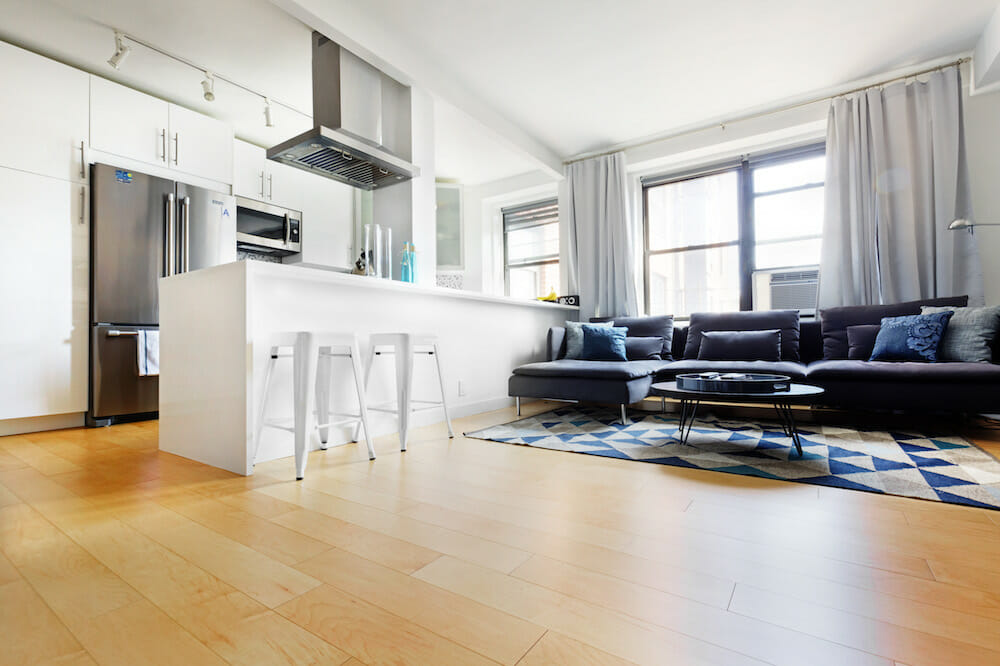
Featuring the engineered wood flooring in Rima’s kitchen
Post your project on Sweeten for free and make your dream renovation a reality. Sweeten simplifies home renovation by connecting homeowners with top-rated general contractors, handling the vetting process and project management. To learn more about how we can help, check out our home renovation services.
The decisions to be made when designing a kitchen can feel daunting—the sheer number alone, let alone the anxiety.
Will this material truly work in a busy cook space? Will it hold up to daily life? Will I still love it in five years? Factor in a growing family and those worries begin to multiply: What if the kids drop their juice boxes; will it stain? What if my child falls…will
Beyond just looks and function, you need to consider what type of traffic your kitchen flooring will truly experience. Is your kitchen a direct landing zone from the garage or a deck, tracking in dirt? Do you have beloved pets whose claws might scratch or who bring in water and mud? Is a high chair frequently dragged around in one area, or has your child graduated to their own mini-vehicle for playtime, adding to wear and tear? Health is a critical factor, too.
Any manufactured flooring and/or its finish should provide clear ratings for its various contents and performance, including VOC (Volatile Organic Compound) emissions and slippage.
Take all of these crucial factors into account as you consider the following materials underfoot. The even better news: With a few smart precautions, you can install just about whatever you want, and continue to enjoy it as your family grows.
Hardwood
Sought out for its natural elegance, wood also delivers a lot of practical benefits: It offers a slight pliancy underfoot, meaning items you drop are less likely to break than on a harder surface like tile. You’ll find two basic wood options:
Solid Wood
If you love the timeless appeal of solid wood, opt for prefinished floors (also known as “factory finished”). These floors arrive with a hard-wearing top coat of aluminum oxide urethane, offering superior protection from scratches and minimizing upkeep like waxing; daily sweeping should suffice. Always ask your dealer about the warranty, which should be provided by the manufacturer—not just the installer—for greater recourse if the floor needs a major or immediate repair. This type of floor can also be refinished multiple times, as long as the dings aren’t too deep. If your preference is for hardwood but you worry about those inevitable dings, take a look at “distressed” styles that cleverly disguise any new imperfections.
Caution: This type of floor will fade with regular exposure to strong, direct sunlight, so reconsider placing it by a window that ushers in intense daily sun. You also need to be very mindful of moisture exposure—say, a leak at the dishwasher or fridge, or water constantly splashed by the sink. And if your toddler drops food by the high chair,
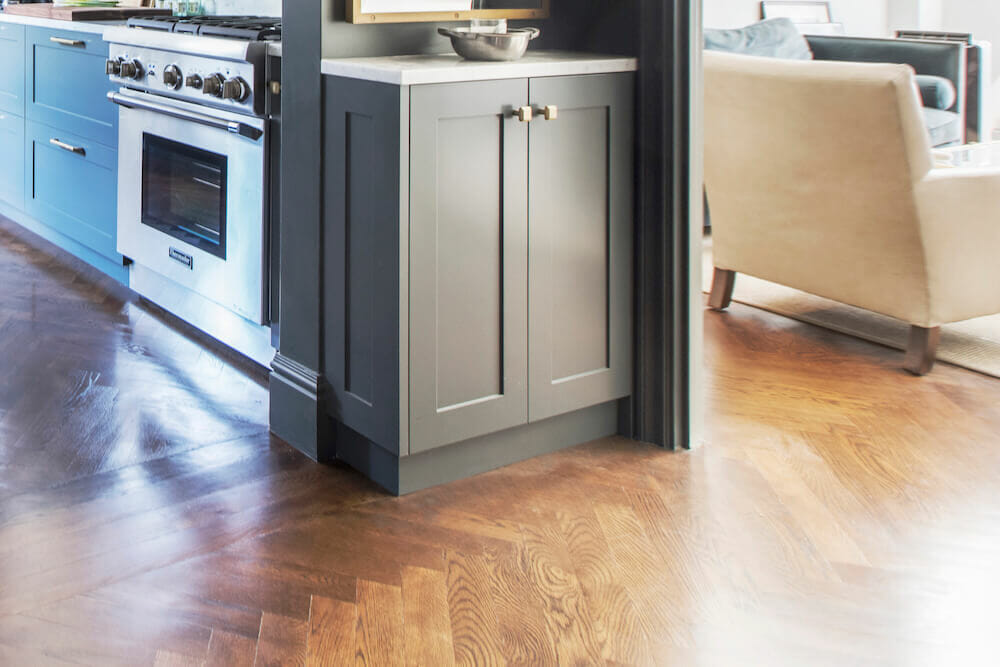
Engineered Wood
The other popular option in this category is engineered wood flooring. This is made of a thin veneer of real wood attached to a structural plywood base. It should cost a little less than solid wood initially, but depending on the thickness of the veneer, you may not be able to refinish it. This makes considering long-term durability and potential replacement costs important. Sweeten brings homeowners an exceptional renovation experience by personally matching trusted general contractors to your project, while offering expert guidance and support—at no cost to you. Renovate expertly with Sweeten
Caution: Formaldehyde, often used as an adhesive, can be found in some engineered wood floors, including bamboo. At the present time, this chemical is not strictly regulated. It’s crucial to inquire with the salesperson or manufacturer regarding any floor made with pressed wood or medium-density fiberboard (MDF) to understand their VOC ratings.
At Sweeten, we’re experts at all things general contractors. Here’s how Sweeten works: We pre-screen them for our network, carefully select the best ones for your remodeling project, and work closely with hundreds of general contractors every day.
Bamboo
Although technically a grass, bamboo is often grouped with hardwoods for many of the same reasons: it looks natural and warm, endures light to medium wear, and is easy underfoot. Most bamboo flooring is made of a bamboo veneer attached to a backing such as plywood or MDF.
However, you need to be mindful of quality. Bamboo is treated with many chemicals to transform it into a suitable flooring material, so off-gassing can be a significant factor. Additionally, as a relative newcomer to flooring, manufacturing sources vary widely, and quality control is not yet highly regulated. Investigate thoroughly, as you would with any product you bring into your home.
Laminate
This type of flooring is similar to laminate countertops, in that it’s composed of dense fiberboard topped with a photographic image of real wood (or other material), which is then sealed with a clear protective layer. With the development of HD printing, laminate now offers a vast array of realistic wood looks, and you can even mix several styles (e.g., a pale oak with a colored border) to achieve unique effects.
It tends to resist light scratching and fading from sunlight remarkably well. That hollow sound that once turned off many homeowners has largely been eliminated by manufacturers who incorporate sound-muffling materials like cork underneath.
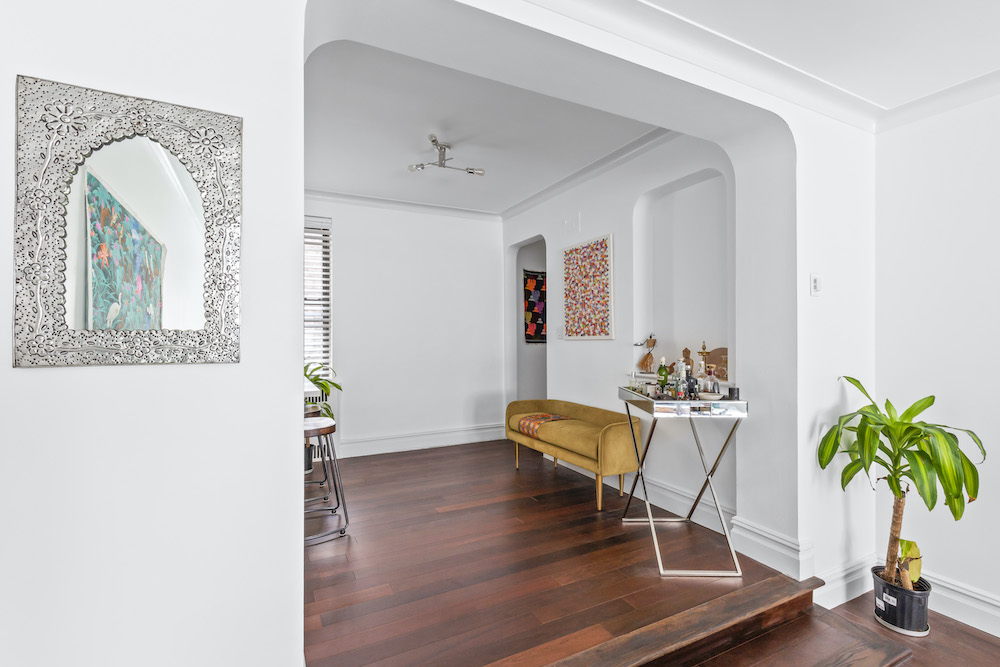
Laminate is installed as a “floating floor,”meaning there’s no glue or nails. Boards connect by means of an interlocking tongue and groove design. Since there’s no need to connect the boards to a subfloor, they can be installed over any uneven surface as long as it’s sealed and remains dry. This makes laminate a good,
Caution: Laminate wears well but, like real wood, it won’t withstand prolonged exposure to water, and it’s slippery when wet. Also, it cannot be refinished. If there’s significant damage, you’ll have to replace the entire board, so it’s wise to order extra to have an exact match if needed for future repairs.
Resilient Flooring
Mostly vinyl falls into this category, but there’s also linoleum. As the term “resilient” indicates, this flooring is easy on humans—ideal
Vinyl
Recent advancements in manufacturing have significantly improved vinyl’s performance since the days when it was relegated to your grandmother’s laundry room. You can now find vinyl that infuses the surface with cultured diamond particles for increased protection against dents, scratches, scuffs, and stains. HD printing advancements allow you to choose
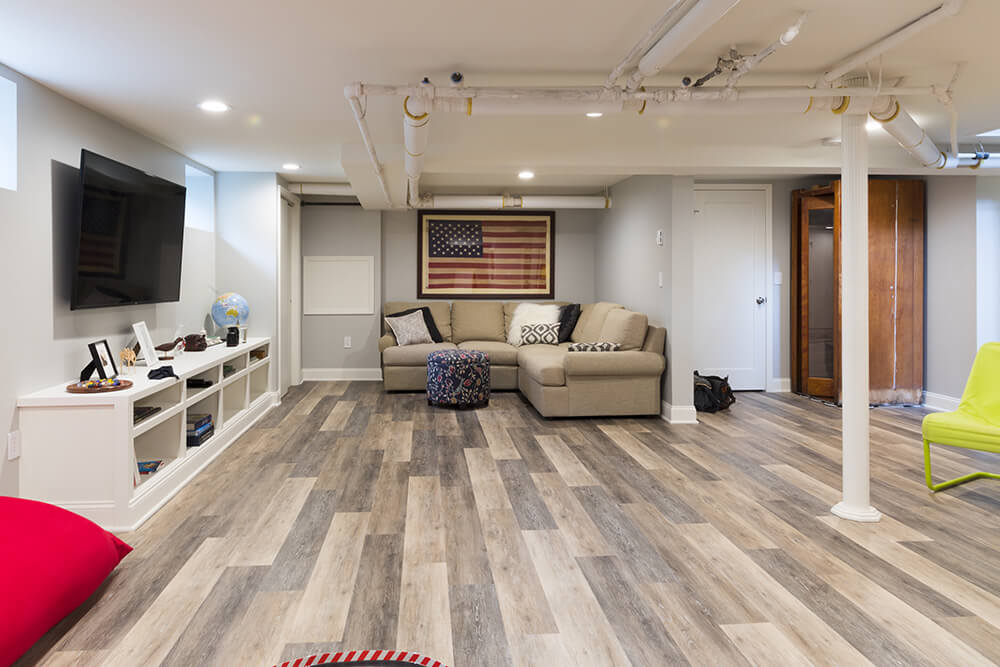
Linoleum
Linoleum is sought after for its range of saturated colors or marbled effects, its inherent resiliency, slip resistance, and excellent everyday wear. It comes in large sheets, offering an almost seamless appearance, as well as tiles if you want a classic checkerboard or just prefer that look. Made of linseed oil and other naturally sourced materials, linoleum is often marketed as a “green” flooring choice. However, it still requires some chemical processing to arrive at the finished product, so it’s important to ask the salesperson about off-gassing and VOC ratings.
Caution: Both vinyl and linoleum wear well but cannot be refinished. Always buy extra material in case of future repairs so you can perfectly match the area you need to patch.
Tile
While tile comes in both ceramic and porcelain, the latter is the harder of the two and thus more appropriate
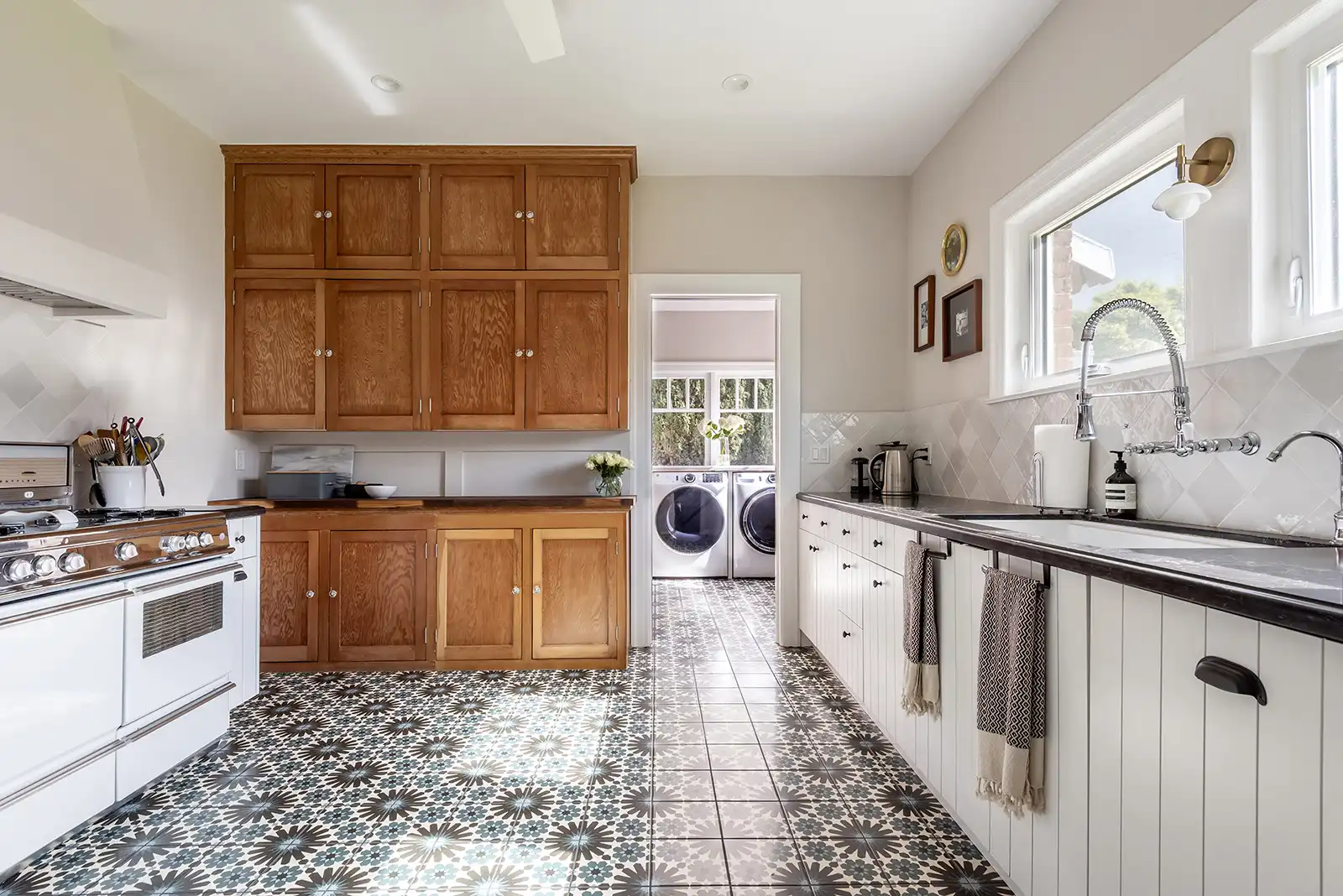
Until children are old enough where toddling and falling is not
Caution: Dishware will almost certainly break on this super-hard surface. Tile can also crack if not installed by a qualified professional on a perfectly smooth, prepared surface. Remember that a rug used to protect little ones will likely need to be cleaned regularly.
Thinking of re-doing or refinishing your wood floors? Check out our guide on why natural wood is reclaiming its place in American homes for everything you need to know to get started.
Ready to start your own renovation journey?
Post your project on Sweeten for free and make your dream kitchen a reality. Sweeten puts you in control of your renovation, from finding the perfect contractor and gathering design inspiration, to using cost guides to plan your budget wisely.
